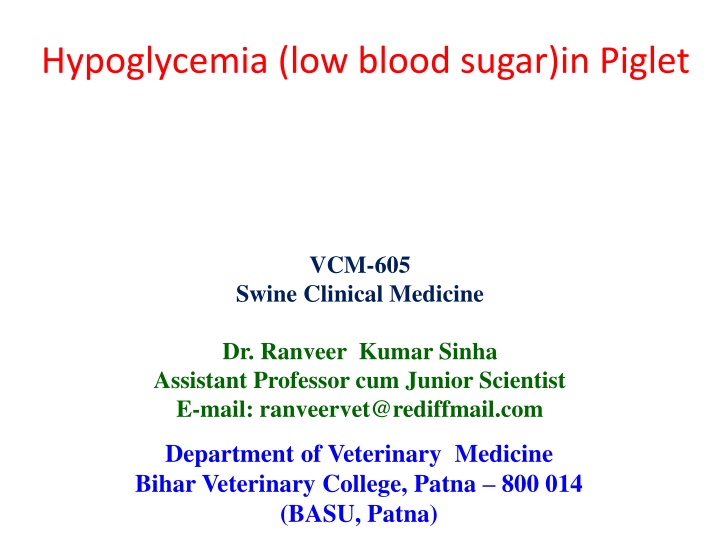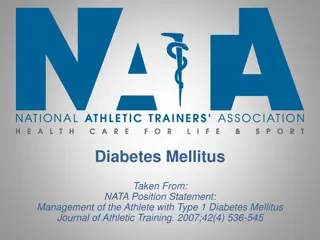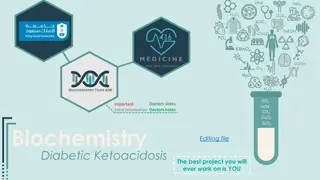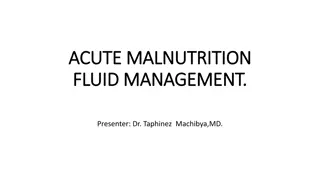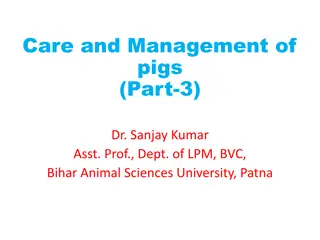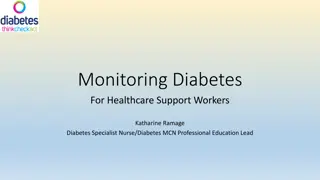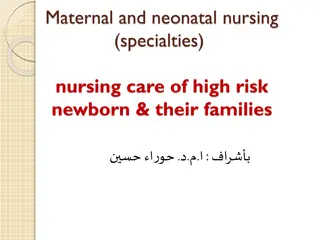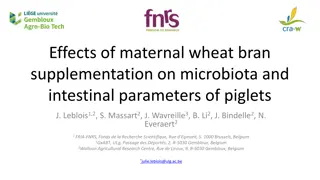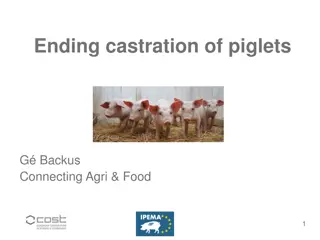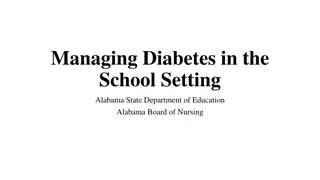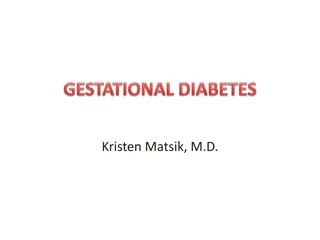Managing Hypoglycemia in Piglets
Hypoglycemia, or low blood sugar, can be life-threatening for newborn piglets. Learn about the causes, clinical signs, diagnosis, treatment, and prevention strategies for this condition to ensure the well-being and survival of piglets on farms. Early recognition and appropriate intervention are crucial to combating hypoglycemia in piglets.
Download Presentation

Please find below an Image/Link to download the presentation.
The content on the website is provided AS IS for your information and personal use only. It may not be sold, licensed, or shared on other websites without obtaining consent from the author.If you encounter any issues during the download, it is possible that the publisher has removed the file from their server.
You are allowed to download the files provided on this website for personal or commercial use, subject to the condition that they are used lawfully. All files are the property of their respective owners.
The content on the website is provided AS IS for your information and personal use only. It may not be sold, licensed, or shared on other websites without obtaining consent from the author.
E N D
Presentation Transcript
Hypoglycemia (low blood sugar)in Piglet VCM-605 Swine Clinical Medicine Dr. Ranveer Kumar Sinha Assistant Professor cum Junior Scientist E-mail: ranveervet@rediffmail.com Department of Veterinary Medicine Bihar Veterinary College, Patna 800 014 (BASU, Patna)
Introduction During the first few days of life the newborn piglet is unable to mobilize the low glycogen reserves in the liver to provide adequate levels of glucose in the blood. It is therefore dependent for energy on a regular intake of lactose from the sows milk. If a piglet cannot obtain sufficient lactose to maintain its energy output, it runs out of energy, its body temperature drops and ultimately it goes into a coma and dies. Hypoglycemia usually occurs in the first 12-24 hours of birth.
Causes Low level of sugar in the blood. No milk - starvation. Severe chilling. Wet pens. Low viable piglets.
Clinical signs Piglets:- Laid on belly. Shivering. Becoming very cold. Starvation. Paddling. Fits and convulsions. Frothing at the mouth - salivation. Comatose. Eyes are sunken and the head bent backwards due to dehydration. High mortality.
Diagnosis Based on the clinical signs. Examine the eyes to see that there is no evidence of rapid back and fore lateral movements which would indicate meningitis not hypoglycemia.
Continue--- The following diseases can give rise to hypoglycaemia in piglets. Clostridial diseases. Congenital tremor. Diahorrhoea - acute E.coli infections. Mastitis, no milk, no colostrum. Navel bleeding. Pseudorabies / Aujesky's disease. Transmissible gastroenteritis (TGE).
Treatment The condition must be recognized early if treatment is to be successful. Immediately remove the piglet to a warm draught free environment to achieve 30 C. A box well bedded with an infra-red lamp above is ideal. Feed the piglet with sow, or alternatively cow, colostrums or 20% dextrose solution by syringe or stomach tube every 20 minutes until it has returned to normal. Then introduce the piglet to a newly furrowed sow's
